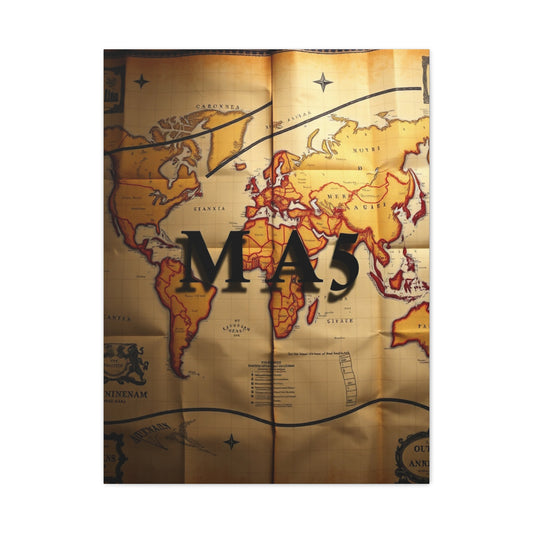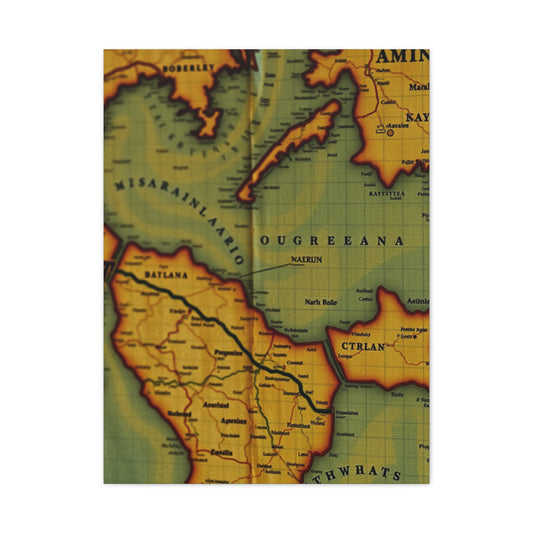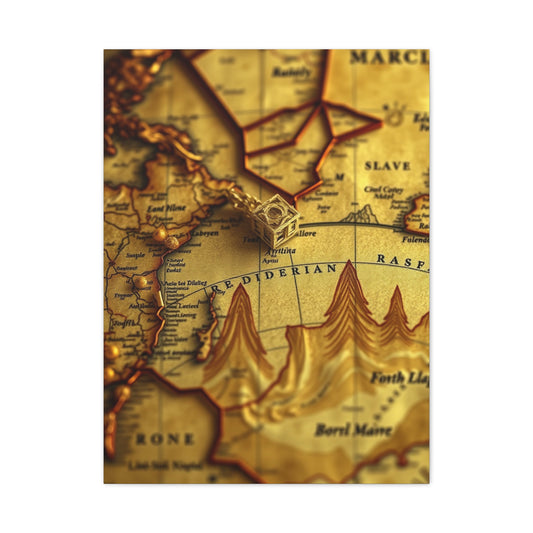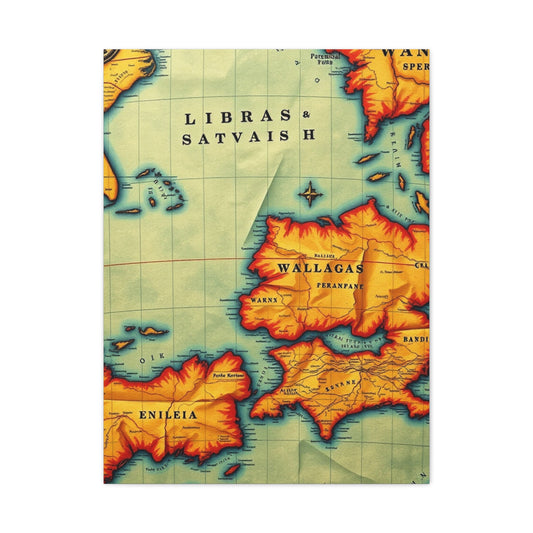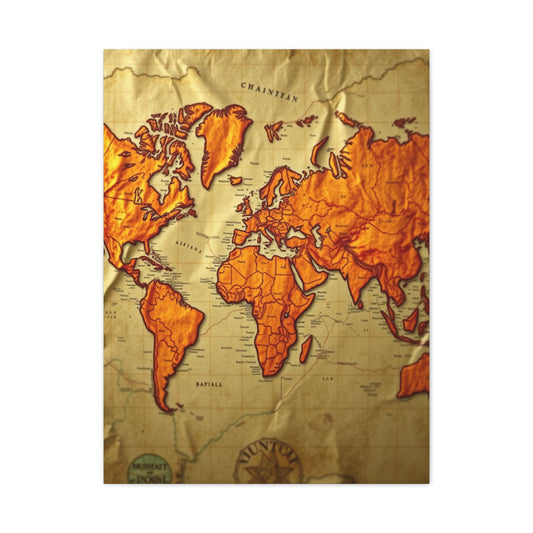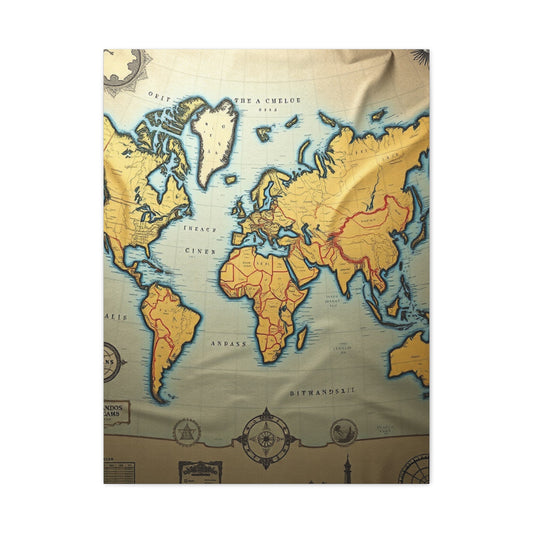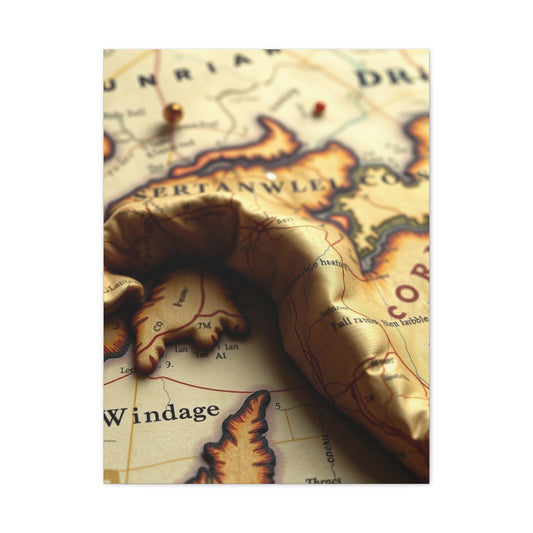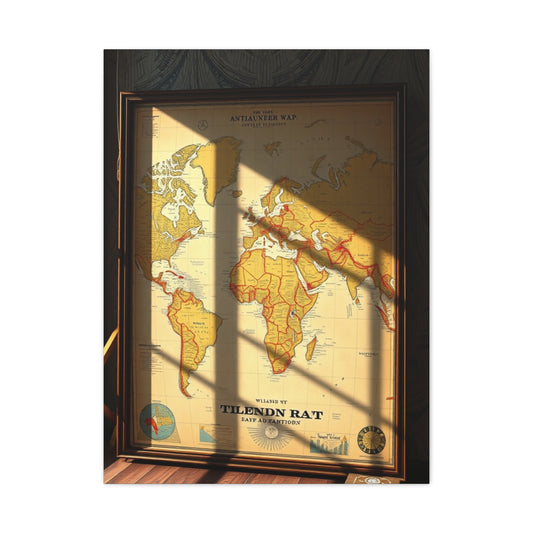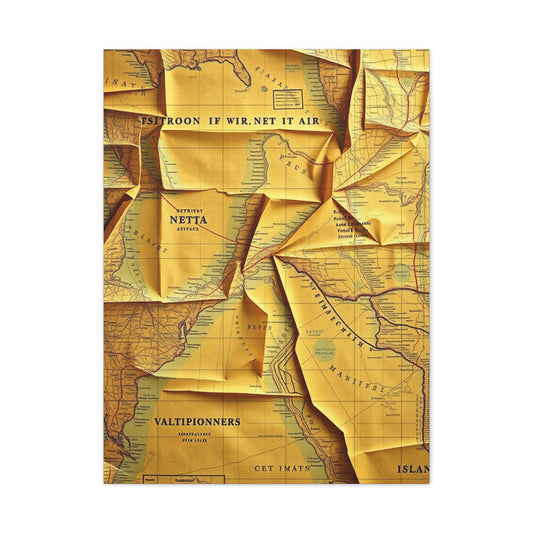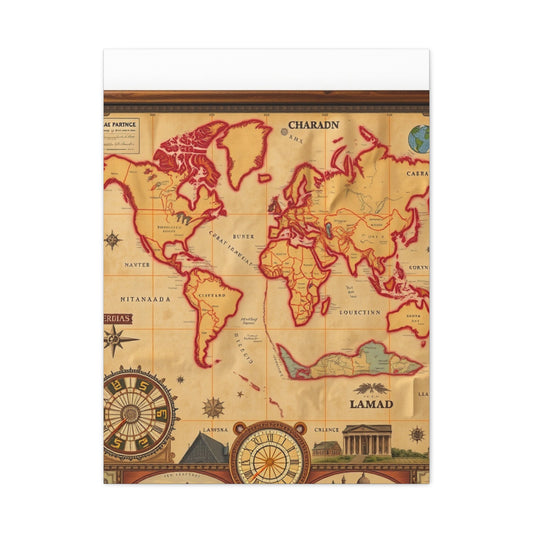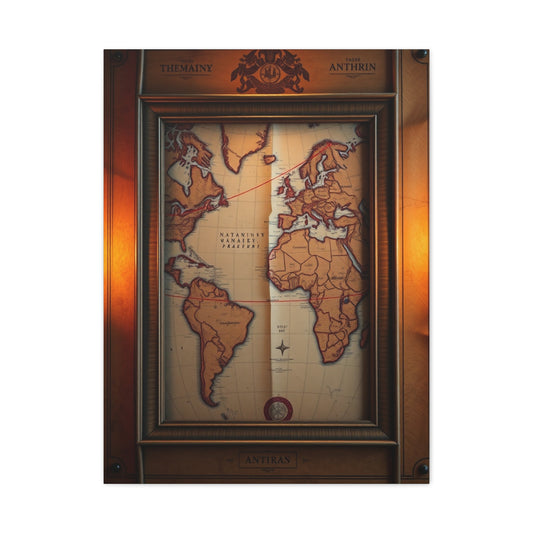Framing Antique Maps: A Complete Wall Art Display Guide
Preserving cartographic antiquities through meticulous framing techniques represents both an artistic endeavor and a scientific preservation challenge that demands exceptional expertise and unwavering attention to detail. Antique maps constitute invaluable historical artifacts that encapsulate centuries of human exploration, geographical understanding, political evolution, and cultural development. These remarkable documents transcend mere decorative elements, serving as tangible connections to pivotal moments in human history including territorial discoveries, commercial expeditions, military campaigns, and diplomatic negotiations. The preservation of these irreplaceable cartographic treasures requires sophisticated framing methodologies that harmoniously blend aesthetic presentation with rigorous conservation principles, ensuring their survival and accessibility for subsequent generations while maintaining their inherent historical authenticity and structural integrity.
Essential Foundations of Modern Conservation Framing Techniques
Conservation framing, a specialized discipline within the broader field of preservation, has evolved significantly over the years. It plays an essential role in safeguarding historical documents, including rare artworks, manuscripts, and antique maps, which are vulnerable to environmental and physical degradation. The core principle behind conservation framing is to protect and maintain the original integrity of these artifacts while enhancing their accessibility for future generations. Through the application of scientifically developed methods and high-quality materials, conservation professionals ensure that these pieces remain intact for centuries to come, with minimal intervention required.
In this field, the protection of documents and artworks hinges on a deep understanding of their inherent vulnerabilities. This includes the study of paper composition, the various techniques used in historical printing, and the aging processes that all contribute to the material's degradation over time. Professional conservation framing addresses these challenges by focusing on several key principles designed to reduce environmental exposure, preserve the structural integrity of the work, and prevent further deterioration.
The Complexity of Paper Composition and Aging: Understanding Material Vulnerabilities
One of the most fundamental aspects of conservation framing is understanding the original composition and age of the materials in question. Historical documents, including antique maps, are often composed of materials that are sensitive to a variety of environmental factors. These may include the type of paper, ink, and adhesive used, as well as the chemical interactions that have occurred over time due to exposure to air, light, and temperature changes. Such understanding is crucial because it allows conservators to develop appropriate strategies for stabilizing the item, preventing further degradation, and ensuring that any treatment used is suitable for the unique characteristics of the document.
Over the years, the composition of paper has evolved, with older papers often containing higher levels of acidic content, which leads to brittleness and yellowing as it ages. Many antique documents also exhibit different manufacturing methods—such as hand-made versus machine-made paper—that influence their structural integrity. A conservator must take all these factors into account when determining the most suitable preservation strategy for each individual piece. For example, a delicate map made with hand-pressed paper may require different care compared to a printed document from the early industrial period.
Addressing Environmental Stressors: Temperature, Humidity, and Light Exposure
The physical environment plays a significant role in the preservation of historical documents and artworks. Temperature fluctuations, high humidity, and exposure to natural light can all contribute to the gradual deterioration of paper and inks. The fundamental principle of conservation framing is to control these environmental stressors by creating a stable microenvironment that minimizes the risks associated with these factors.
One of the most critical aspects of environmental control in conservation framing is maintaining stable temperature and humidity levels. Extreme variations in these two elements can cause paper to expand and contract, leading to warping or cracking over time. High humidity levels can encourage the growth of mold, while low humidity can cause the paper to become brittle and fragile. To combat these risks, conservators implement specialized framing systems that incorporate materials and techniques designed to buffer against these environmental fluctuations, providing a stable microclimate within the frame itself.
Additionally, light exposure is another significant concern when it comes to the conservation of historical documents. The photochemical degradation of paper and ink occurs when materials are exposed to ultraviolet (UV) light for prolonged periods, causing fading and discoloration. In conservation framing, UV-filtering glass or acrylic is used to protect the work from harmful light exposure while still allowing for its display. This is especially crucial for items like antique maps, which often feature vibrant colors and fine details that can easily be damaged by UV radiation.
The Role of Biological Threats: Pests, Mold, and Airborne Contaminants
Biological threats are another critical consideration in the conservation of historical documents and artworks. These threats include pests such as insects, rodents, and mold, all of which can wreak havoc on paper and other materials. When left unchecked, pests can eat through paper, while mold can cause permanent staining and contribute to structural weakening. Additionally, airborne contaminants such as dust, pollutants, and volatile organic compounds (VOCs) can settle on the surface of documents, leading to chemical reactions that degrade the integrity of the work.
A professional conservation framing approach involves minimizing these biological threats by employing specialized materials that create a barrier against such damage. For instance, conservation-grade framing materials such as acid-free mats, papers, and backing boards are used to protect the artwork from contact with pollutants or pests. In some cases, conservationists may also use controlled atmospheres, including airtight frames or dehumidifiers, to eliminate moisture and discourage mold growth.
These environmental control measures not only preserve the aesthetic qualities of the document but also ensure its longevity by preventing the development of biological threats that can irreparably damage the item.
The Ethical Principle of Reversibility: Ensuring Preservation with Minimal Intervention
One of the cornerstone ethical principles in professional conservation is reversibility. This principle dictates that any interventions made in the conservation process should be fully reversible, meaning they can be undone without causing further damage to the original item. This is particularly important when it comes to historical documents, where any attempt to alter the item can potentially interfere with its historical value and integrity.
For example, when it comes to antique maps, conservators may need to apply adhesives, glues, or repair materials to stabilize the document. These materials must be carefully selected to ensure they can be removed or replaced in the future without harming the original paper or artwork. This ethical approach ensures that future conservators can continue working on the item, should further preservation efforts be required, and that the original piece is maintained in as close to its original condition as possible.
Documentation is a crucial part of the reversibility principle. Every intervention made during the conservation process is carefully recorded in detail, including the materials used and the techniques applied. This detailed record helps maintain the integrity of the work and ensures that all decisions made during the conservation process are fully transparent. By adhering to these rigorous standards, conservators ensure that their efforts not only preserve the item today but also allow for future adjustments, should the need arise.
Custom Framing Solutions for Unique Historical Artifacts
Antique maps and other historical documents come in a wide variety of sizes and formats, and conservation framing must be tailored to each individual piece. Unlike mass-produced framing solutions, which rely on standardized sizes and materials, professional conservation framing takes into account the specific needs of the item in question. This means that each frame is custom-made to provide the best possible protection while maintaining the document’s aesthetic qualities.
For larger documents such as antique maps, a custom frame might include a specially designed mount that supports the weight of the paper and prevents it from sagging. Specialized backing materials, such as acid-free foam core or archival-quality board, are used to ensure that the document remains in a stable position and is protected from bending or warping. In some cases, conservationists may also use mounting techniques that minimize direct contact between the document and the frame, such as floating mounts or hinged mats. These techniques ensure that the artwork is preserved without risking permanent attachment to the backing materials.
In addition to providing structural support, custom framing also allows conservators to design solutions that enhance the visual presentation of the artwork while protecting it. This balance between aesthetics and preservation is key to ensuring that the document remains both accessible and well-preserved for future generations to enjoy.
Importance of Material Selection in Conservation Framing for Antique Maps
The process of conservation framing is highly specialized, with material selection being one of the most crucial factors in ensuring the long-term preservation of delicate historical documents, such as antique maps, manuscripts, and artworks. The materials chosen for framing can either enhance the lifespan of the item or contribute to its deterioration. As such, the correct selection of materials is essential to prevent irreversible damage that could compromise the integrity of the artwork or document. Choosing subpar or inappropriate materials can lead to a variety of issues, including discoloration, degradation, and irreversible weakening of the original structure.
When it comes to antique maps, the risk of deterioration is especially high due to the age, delicate composition, and historical significance of these pieces. Thus, the materials used in framing these maps must meet very specific standards that protect against the chemical reactions, environmental stressors, and mechanical forces that could otherwise degrade the work over time. In this detailed exploration, we will discuss the importance of specialized materials for conservation framing and how they serve as the foundation for the protection of valuable historical documents.
The Role of Acid-Free Materials in Preventing Chemical Damage
Acid-free materials are the cornerstone of any successful conservation framing project. Acidity, whether it is naturally present in the paper or introduced by inappropriate framing materials, is one of the primary causes of long-term damage to historical documents. Acidic environments lead to the breakdown of paper fibers, causing the paper to yellow, become brittle, and eventually disintegrate. These processes, which occur over a prolonged period, are irreversible and can significantly decrease the aesthetic and structural integrity of an antique map.
To prevent this type of damage, conservators rely on acid-free materials that are pH neutral or alkaline. These materials create a stable and non-reactive environment for the artwork, preventing the introduction of harmful acids that can speed up degradation. The use of acid-free matting, backing boards, and adhesives ensures that the map remains free from chemical contamination, extending its life and maintaining its appearance for years to come.
In conservation framing, the materials used are rigorously tested to meet specific standards that ensure they remain chemically stable over time. For example, cotton fiber-based matting is often used due to its inherent acidity-free properties and excellent archival quality. Such materials undergo extensive testing to meet industry standards and are designed to withstand varying environmental conditions, maintaining their effectiveness for decades or even centuries.
Museum-Quality Matting Materials: Composition and Benefits for Preservation
Matting materials play a vital role in supporting and presenting historical documents while also contributing to their preservation. Museum-quality matting materials, made from cotton fiber or other archival-grade materials, offer a neutral pH environment that protects against the harmful effects of acidic materials, while also providing structural support and aesthetic appeal.
These materials are crafted to withstand the test of time, ensuring that they remain stable and do not introduce any harmful substances that could degrade the document. The cotton fiber construction of museum-quality matting materials is particularly beneficial because it is acid-free, durable, and resistant to environmental factors such as humidity and temperature fluctuations. These properties make them ideal for long-term preservation of historical documents, including antique maps.
Additionally, these matting materials come in various thicknesses, allowing for customized mounting solutions that cater to the unique requirements of different documents. Whether the item requires a thin, unobtrusive mat or a thicker, more substantial mounting, the use of museum-quality materials ensures consistent quality and reliable protection for every application. By choosing these high-quality matting materials, conservators ensure that the artwork is not only presented beautifully but also safeguarded from potential damage caused by inferior framing materials.
Backing Materials: Protecting Documents from Environmental Harm
Just as important as the choice of matting is the selection of backing materials used in conservation framing. Backing boards provide structural stability and support for documents, helping to prevent bending, warping, or distortion. However, the quality of the backing material is essential to ensure that it does not contribute to any deterioration of the document over time.
Conservation-grade backing boards are specifically designed to maintain a neutral pH level and are made from materials that are chemically inert, preventing harmful acids from migrating into the paper and causing damage. These backing boards also include buffering agents that neutralize acids from external sources, such as from the surrounding framing materials, ensuring that the artwork remains protected for the long term.
When framing antique maps, the need for high-quality backing materials becomes even more critical. Maps are often large and delicate, requiring substantial support to prevent them from becoming misshapen or damaged. Using conservation-grade materials that offer stability, protection, and durability helps maintain the original condition of the maps, preserving their historical significance and aesthetic value.
The Importance of Reversible Mounting Techniques for Conservation
One of the foundational principles of conservation framing is reversibility, which means that all interventions made during the preservation process should be fully reversible without causing harm to the original document. Reversibility is particularly important in conservation work because it ensures that future conservators can remove or replace any materials used in the framing process without compromising the integrity of the document.
Traditional framing methods, such as gluing or directly affixing the document to a backing board, often resulted in irreversible alterations that could permanently damage the artwork. In contrast, modern conservation framing techniques prioritize the use of reversible methods, such as archival-grade adhesives and mounting systems, to ensure that no permanent bond is made with the document. These methods provide secure support for the artwork, but they also allow for the removal of the materials if needed, without causing any harm to the original paper or ink.
For antique maps, where the need for stability and protection is paramount, conservators often employ mounting techniques such as hinging or floating the document. These methods secure the map in place while allowing for easy removal if future conservation efforts are required. The emphasis on reversibility in conservation framing helps ensure that historical documents are preserved in a way that respects their integrity and allows for future interventions as necessary.
The Role of Mounting Adhesives: pH Neutral and Safe for Historical Documents
In the conservation framing process, the adhesives used are just as important as the framing materials themselves. Adhesives play a crucial role in securing the document to its backing material while ensuring that it is not subjected to harmful chemicals or long-term degradation.
Conservation framing professionals use pH-neutral adhesives that are specifically designed for archival purposes. These adhesives are free of acids and chemicals that could potentially damage the document over time, ensuring that the artwork remains in its original condition. The use of archival adhesives is particularly important for antique maps, where the preservation of fine details and the delicate paper composition is vital.
These adhesives also offer flexibility, allowing conservators to choose the best bonding method for each individual piece. Whether the adhesive is used to secure a map in a specific position or to attach a corner of the document, it will provide a strong bond without compromising the material’s integrity. Additionally, these adhesives are reversible, ensuring that they can be safely removed if needed without damaging the map or its surface.
Customization and Flexibility in Framing: Tailored Solutions for Different Document Sizes
Conservation framing is not a one-size-fits-all solution. Each historical document or artwork presents unique challenges, requiring customized framing solutions to provide optimal protection. This is especially true for larger documents, such as antique maps, which may require special mounting techniques, specific materials, and a carefully tailored approach to ensure their preservation.
One of the key advantages of modern conservation framing is the ability to customize the framing to suit the specific needs of the document. Whether the map is large, fragile, or has unique features, conservation professionals can select the appropriate materials and framing techniques to ensure the document is properly supported, protected, and displayed. This flexibility allows for the preservation of a wide range of historical documents, regardless of their size, condition, or complexity.
Customized framing solutions also ensure that the document remains secure during the framing process. Whether the piece is a valuable map or a delicate manuscript, using tailored techniques helps prevent damage during handling and ensures the artwork remains in top condition.
The Long-Term Benefits of Specialized Materials in Conservation Framing
The long-term benefits of using specialized materials for conservation framing are numerous and far-reaching. By choosing high-quality, acid-free materials, conservators protect documents and artworks from degradation, ensuring they remain intact for future generations. Proper material selection prevents the introduction of harmful chemicals, biological threats, and environmental stressors, which could otherwise lead to irreversible damage over time.
Using reversible mounting techniques and pH-neutral adhesives allows for future adjustments to be made if necessary, ensuring the document remains accessible for ongoing research or exhibition. The durability and stability of conservation-grade materials also guarantee that the document will be safeguarded against fluctuations in temperature, humidity, and light exposure.
Advanced Glazing Technologies for Light Protection
Ultraviolet radiation represents one of the most significant threats to paper-based historical documents, causing photochemical reactions that lead to fading, discoloration, and structural weakening over time. Advanced glazing technologies have evolved considerably from traditional glass options, offering sophisticated protection against multiple forms of radiation while maintaining optical clarity and viewing quality essential for proper display.
Museum-quality acrylic glazing materials provide superior UV filtration capabilities while offering enhanced impact resistance and reduced weight compared to traditional glass alternatives. These advanced materials filter harmful wavelengths while maintaining excellent optical properties that ensure accurate color representation and detailed visibility. The reduced weight characteristics prove particularly advantageous for large format maps that might otherwise require extensive structural support systems.
Anti-reflective treatments enhance viewing experiences by minimizing surface reflections that can obscure map details or create viewing difficulties under various lighting conditions. These specialized coatings maintain protective capabilities while improving visual accessibility, making framed maps more enjoyable to examine and study. The combination of UV protection and anti-reflective properties represents optimal glazing technology for conservation applications.
Static control properties in modern glazing materials prevent dust accumulation and reduce maintenance requirements while protecting against electrostatic attraction of airborne particles. This characteristic proves particularly valuable in environments where cleaning access may be limited or where frequent maintenance could pose risks to valuable documents.
Strategic Frame Selection and Construction Considerations
Frame selection significantly impacts both preservation effectiveness and aesthetic presentation of antique maps, requiring careful consideration of material properties, construction quality, and design compatibility. The frame serves as the primary structural component of the preservation system while contributing substantially to the overall visual impact of the displayed piece.
Hardwood frame construction provides exceptional durability and stability while offering natural resistance to warping and dimensional changes that could stress mounting systems or compromise seal integrity. Traditional joinery techniques using mortise and tenon construction create stronger, more stable connections than modern fastener-based assembly methods while maintaining historical authenticity appropriate for antique map display.
Metal framing systems offer alternative advantages including exceptional strength, dimensional stability, and corrosion resistance that may prove advantageous in challenging environmental conditions. Aluminum profiles provide lightweight construction with excellent structural properties, while stainless steel options offer enhanced durability for demanding applications. The selection between wood and metal construction depends on specific preservation requirements, aesthetic preferences, and environmental considerations.
Frame depth considerations must accommodate the complete conservation package including matting layers, mounting systems, and glazing while providing adequate air space for environmental stability. Insufficient depth can create compression problems that damage mounted materials, while excessive depth may create visual proportion issues or structural complications. Professional frame design balances these competing requirements through careful dimensional planning and construction.
Finishing materials and techniques require evaluation for chemical compatibility and long-term stability to prevent outgassing or other chemical interactions that could affect preserved documents. Traditional finishing materials may contain solvents, oils, or other compounds that could migrate into the framing environment and cause damage over time. Conservation-appropriate finishing systems eliminate these risks while maintaining desired aesthetic characteristics.
Historical Authenticity and Period-Appropriate Presentation
Achieving historical authenticity in map framing enhances both aesthetic appeal and scholarly value while respecting the cultural context of these important documents. Period-appropriate framing approaches acknowledge the historical significance of antique maps while providing contemporary preservation standards that ensure long-term survival.
Research into historical framing practices reveals diverse approaches that varied by geographic region, time period, and intended use of cartographic materials. Understanding these historical contexts enables informed decisions about appropriate presentation styles that complement rather than conflict with the map's inherent characteristics. This research-based approach elevates the overall presentation while maintaining scholarly integrity.
Antique frame acquisition and restoration represents an ideal approach for historically conscious collectors seeking authentic presentation options. Genuine period frames provide unmatched historical authenticity while often proving more economical than custom reproduction alternatives. However, antique frame restoration requires specialized expertise to ensure structural integrity and chemical compatibility with conservation requirements.
Period-appropriate style reproduction offers practical alternatives when genuine antique frames prove unavailable or unsuitable for specific applications. Modern manufacturing techniques can create historically accurate reproductions using conservation-appropriate materials and construction methods that provide authentic appearance with enhanced preservation characteristics. This approach combines historical accuracy with contemporary protection standards.
Documentation of frame provenance and historical significance adds scholarly value to the overall presentation while contributing to the historical record. Detailed records of frame origins, previous uses, and restoration activities support research efforts while enhancing the educational value of displayed materials.
Sophisticated Matting Techniques and Presentation Strategies
Matting design significantly influences both preservation effectiveness and visual impact of framed antique maps, requiring sophisticated understanding of proportional relationships, color theory, and conservation principles. Professional matting techniques create appropriate visual separation between maps and glazing while providing essential protection against direct contact that could cause mechanical damage or adhesion problems.
Float mounting represents the optimal presentation technique for most antique maps, allowing complete visibility of original edges while celebrating the three-dimensional character of historical documents. This approach acknowledges the handcrafted nature of antique maps while providing secure mounting without concealing important marginal information or evidence of historical use. Float mounting particularly enhances dissected or folded maps where dimensional characteristics constitute integral aspects of their historical significance.
Multiple layer matting systems create sophisticated visual depth while providing additional protection through increased separation from glazing surfaces. Double or triple matting arrangements enable subtle color harmonies that complement map characteristics without overwhelming delicate cartographic details. These layered approaches require precise cutting and alignment to achieve professional results while maintaining conservation standards throughout the construction process.
Color selection for matting materials demands careful consideration of historical appropriateness, visual compatibility, and long-term stability characteristics. Neutral tones typically provide optimal compatibility with diverse map styles while avoiding visual conflicts that could detract from cartographic content. Earth tones, cream variations, and muted colors often complement antique paper tones while maintaining visual subordination to the featured map.
Custom cutting techniques enable precise accommodation of irregular map dimensions while creating visually pleasing proportional relationships. Professional cutting equipment produces clean, accurate edges that contribute to overall presentation quality while ensuring proper fit within frame dimensions. Hand-cutting techniques may be necessary for complex shapes or special design requirements that exceed standard equipment capabilities.
Environmental Control and Microclimate Management
Creating stable environmental conditions within framing systems provides essential protection against fluctuating external conditions that accelerate deterioration processes in paper-based materials. Microclimate management techniques enable precise control of temperature, humidity, and air quality within sealed frame environments while maintaining accessibility for viewing and study.
Humidity control represents a critical aspect of paper preservation, as excessive moisture promotes biological activity while insufficient humidity causes brittleness and mechanical failure. Sealed framing systems can incorporate humidity buffering materials that absorb and release moisture to maintain stable conditions regardless of external fluctuations. These passive control systems provide continuous protection without requiring active monitoring or adjustment.
Temperature stability prevents expansion and contraction cycles that stress paper fibers and mounting systems while reducing chemical reaction rates that contribute to degradation processes. Thermal isolation through appropriate frame construction and mounting techniques minimizes temperature variations while protecting against rapid changes that could cause mechanical damage through differential expansion.
Air quality management addresses contamination concerns including dust, atmospheric pollutants, and biological materials that could cause staining, chemical damage, or biological infestation. Sealed frame construction with filtered air exchanges provides protection against airborne contaminants while maintaining internal air quality through controlled ventilation systems.
Monitoring systems enable ongoing assessment of environmental conditions within framed displays, providing early warning of potential problems before significant damage occurs. Digital monitoring equipment can track multiple parameters continuously while maintaining discrete profiles that don't interfere with display aesthetics. This proactive approach enables preventive interventions that maintain optimal preservation conditions.
Advanced Mounting and Attachment Methodologies
Professional mounting techniques provide secure attachment while maintaining reversibility and chemical compatibility essential for conservation applications. These sophisticated methods accommodate diverse map characteristics including size variations, condition issues, and material properties while ensuring long-term stability and preservation effectiveness.
Hinging systems using Japanese tissue paper and wheat starch paste provide traditional mounting approaches with proven longevity and reversibility characteristics. These time-tested techniques create secure attachments that accommodate natural paper movement while allowing complete removal without damage to original materials. Proper hinging requires specialized skills and materials to achieve optimal results while maintaining conservation standards.
Corner mounting systems provide alternative approaches that eliminate direct adhesive contact with map materials while maintaining secure positioning within matting systems. These mechanical attachment methods use small corner pockets that hold map edges without requiring adhesive application to original surfaces. The technique proves particularly effective for maps with damaged or fragile edges that cannot tolerate traditional mounting stress.
Vacuum mounting systems enable secure attachment of large or irregular maps while providing even pressure distribution that prevents localized stress concentrations. These specialized systems use controlled vacuum pressure to maintain contact between maps and mounting surfaces while allowing easy removal when necessary. The technique requires specialized equipment but provides exceptional results for challenging mounting applications.
Magnetic mounting systems offer completely reversible attachment options using rare earth magnets concealed within matting systems. These innovative approaches eliminate chemical adhesives entirely while providing secure positioning and easy removal capabilities. Magnetic systems prove particularly valuable for temporary displays or situations where frequent removal might be necessary.
Specialized Techniques for Damaged or Fragile Maps
Antique maps frequently present condition challenges that require specialized framing approaches to accommodate damage while providing appropriate protection and presentation. These challenging applications demand creative solutions that balance preservation needs with presentation goals while avoiding interventions that could cause additional harm.
Tear repair and stabilization techniques must be evaluated carefully to ensure compatibility with framing goals and long-term preservation objectives. Minor repairs using appropriate materials and techniques can enhance stability while improving appearance, but extensive restoration should be undertaken only after careful consideration of costs, benefits, and potential alternatives. Consultation with paper conservation professionals provides essential guidance for complex condition issues.
Fragmented or separated map sections require creative mounting approaches that maintain spatial relationships while accommodating individual pieces. Floating techniques prove particularly effective for these applications, allowing separate sections to be positioned accurately while maintaining visual coherence. Careful documentation of fragment relationships supports reconstruction efforts while preserving archaeological evidence of damage patterns.
Severely brittle or damaged maps may require specialized support systems that distribute stress while providing access for viewing. Custom mounting approaches using multiple support layers can accommodate extreme fragility while maintaining presentation quality. These applications often require collaboration between framers and conservation professionals to develop appropriate solutions.
Water damage, staining, or biological contamination require assessment and possible treatment before framing to prevent continued deterioration within sealed environments. Professional evaluation determines appropriate interventions while ensuring framing approaches accommodate any residual condition issues. Some damage types may require ongoing monitoring or specialized environmental controls within framing systems.
Quality Control and Professional Standards
Maintaining consistent quality standards throughout the framing process ensures optimal preservation effectiveness while meeting professional expectations for presentation quality. These standards encompass material selection, construction techniques, finishing quality, and documentation practices that distinguish professional conservation framing from conventional approaches.
Material certification and documentation provide essential quality assurance while supporting conservation goals through verified performance characteristics. Reputable suppliers provide detailed specifications and testing results that confirm suitability for conservation applications. This documentation trail supports professional standards while providing accountability for material performance over time.
Construction quality standards address precision, durability, and finish quality that affect both preservation effectiveness and presentation aesthetics. Professional framing techniques produce clean, accurate joints and alignments while maintaining structural integrity under normal use conditions. Quality control procedures identify and correct deficiencies before completion while ensuring consistent results across multiple projects.
Installation and mounting precision affects both immediate appearance and long-term preservation outcomes through proper alignment, secure attachment, and appropriate tension control. Professional installation techniques ensure maps remain properly positioned while avoiding stress concentrations that could cause damage over time. These precision requirements demand specialized tools and techniques that distinguish professional work from amateur efforts.
Final inspection and documentation procedures verify completion quality while providing records for future reference and maintenance planning. Detailed documentation includes material specifications, construction details, environmental recommendations, and maintenance schedules that support long-term care and preservation goals.
Maintenance and Long-Term Care Strategies
Ongoing maintenance requirements for framed antique maps encompass monitoring, cleaning, environmental management, and periodic assessment procedures that ensure continued preservation effectiveness while maintaining presentation quality. These maintenance programs extend frame life while protecting valuable map materials through proactive care approaches.
Regular inspection schedules enable early detection of potential problems including seal failures, glazing damage, mounting stress, or environmental issues that could affect preservation outcomes. Systematic inspection procedures document frame condition while identifying maintenance needs before problems become serious. Professional inspection services provide expertise for complex assessments while training collectors in basic monitoring techniques.
Cleaning protocols address both exterior maintenance and internal cleaning requirements while protecting sensitive map materials from damage during maintenance activities. Exterior cleaning focuses on frame surfaces and glazing materials using appropriate techniques and materials that maintain protective properties while improving appearance. Internal cleaning may require partial disassembly and specialized procedures that should be undertaken only by qualified professionals.
Environmental monitoring and adjustment procedures ensure optimal preservation conditions while accommodating changing external conditions or building modifications that might affect frame environments. Regular monitoring identifies trends and issues while enabling proactive adjustments that maintain stability. Digital monitoring systems provide continuous oversight while alerting caretakers to significant changes requiring attention.
Periodic reassessment and upgrading opportunities enable incorporation of improved materials and techniques as conservation science advances while maintaining compatibility with existing frame systems. These upgrade opportunities might include glazing improvements, environmental control enhancements, or mounting system modifications that provide enhanced protection while maintaining presentation quality.
Professional Services and Expert Consultation
Engaging qualified conservation professionals ensures optimal results while protecting valuable antique maps from damage that could result from inappropriate techniques or materials. Professional services encompass design consultation, material specification, construction oversight, and ongoing support that maintains preservation standards while achieving presentation goals.
Framer qualifications and certifications provide assurance of professional competency while identifying practitioners with specialized knowledge in conservation applications. Professional organizations maintain certification programs and continuing education requirements that ensure members remain current with evolving techniques and standards. These credentials distinguish qualified professionals from general framers who may lack conservation expertise.
Consultation services enable collaborative approaches that combine collector knowledge with professional expertise while developing appropriate solutions for specific applications. Professional consultation addresses material selection, technique specification, environmental considerations, and long-term care planning that optimize preservation outcomes while meeting budget and presentation requirements.
Project management and quality assurance services ensure projects proceed according to specifications while maintaining timeline and budget requirements. Professional oversight prevents problems while ensuring quality standards throughout construction processes. These management services prove particularly valuable for complex projects involving multiple maps or challenging preservation requirements.
Ongoing support and maintenance services provide long-term assistance while protecting conservation investments through professional care and monitoring. These relationships ensure continued preservation effectiveness while providing access to expertise for future needs or problems that might arise. Professional relationships often span many years while supporting growing collections and evolving preservation requirements.
The preservation of antique maps through professional framing techniques represents both an artistic achievement and a scientific accomplishment that protects irreplaceable historical artifacts while enabling their continued study and appreciation. Through careful attention to conservation principles, material selection, construction quality, and ongoing maintenance, these remarkable documents can survive for future generations while providing current viewers with access to humanity's cartographic heritage. The investment in professional conservation framing pays dividends through enhanced preservation, improved presentation, and increased scholarly value that benefits collectors, researchers, and society as a whole.
Final Thoughts
Framing an antique map is never a simple matter of presentation—it is a balancing act between artistry, history, and science. These documents embody centuries of human exploration, discovery, and cultural development, and their preservation carries profound responsibility. Professional conservation framing ensures that antique maps retain not only their aesthetic charm but also their historical authenticity, allowing future generations to study, appreciate, and connect with them.
The true value of conservation framing lies in its dual purpose: protection and enhancement. On one hand, advanced materials—acid-free mats, pH-neutral adhesives, archival backing boards, and UV-protective glazing—form a secure environment that shields fragile paper from environmental threats. On the other, thoughtful design decisions—period-appropriate frames, museum-quality matting, and carefully considered proportions—transform maps into striking display pieces worthy of their cultural importance. The result is an integration of preservation and presentation that respects the map’s integrity while elevating its visual impact.
Psychologically and culturally, antique maps are more than historical artifacts; they are portals into the collective imagination of past centuries. They represent how earlier societies understood the world, where they believed opportunity or danger lay, and how power was asserted through geography. When framed appropriately, maps become living narratives on the wall. They invite curiosity, inspire conversation, and convey a sense of continuity between past and present. The act of framing, therefore, is not purely functional—it is interpretive, curatorial, and deeply meaningful.
Central to successful conservation is the principle of reversibility. This ensures that all interventions—mounting, adhesives, even frame construction—can be undone without harming the original document. The wisdom of reversibility underscores a respect for historical authenticity. It acknowledges that future conservators may have access to improved technologies or approaches and that today’s preservation should never close the door to tomorrow’s advances. This ethic also reassures collectors and institutions that their treasures remain as untouched as possible, safeguarded but never compromised.
Equally critical is environmental control. Antique maps are especially vulnerable to temperature fluctuations, humidity, and light exposure. Without protection, these factors accelerate fading, brittleness, mold growth, or pest damage. By integrating microclimate management techniques and advanced glazing technologies, conservation frames create a buffer between the artifact and the unpredictable world outside. When combined with regular monitoring and maintenance, these protective measures dramatically extend the map’s lifespan, preserving not only its appearance but also its structural integrity.
Yet conservation framing is not solely about science; it is about storytelling. The choice of frame style, mat color, and presentation method can dramatically influence how a map is perceived. A float-mounted Renaissance-era map in an antique walnut frame speaks to authenticity and historical gravitas, while a sleek modern frame with anti-reflective glazing might highlight the map’s artistry in a contemporary space. Each decision contributes to how the viewer engages with the piece, whether as an academic artifact, a work of art, or a decorative centerpiece. In this sense, framing becomes a curatorial act, shaping the dialogue between artifact and audience.
Collectors and institutions investing in conservation framing are making more than a financial commitment—they are making a cultural investment. Properly preserved and displayed, antique maps gain value beyond the monetary; they acquire gravitas, prestige, and educational importance. They become centerpieces of collections, exhibitions, or private interiors, enriching the spaces they inhabit while safeguarding human heritage.
Ultimately, framing antique maps is about stewardship. These cartographic treasures do not truly belong to us; they are fragments of collective history entrusted to our care. The responsibility of preservation ensures that the voyages, boundaries, and worldviews they depict endure. By engaging skilled professionals, selecting appropriate materials, and adhering to conservation principles, we honor the craftsmanship of the past while ensuring its survival into the future.
Antique maps, once safeguarded within thoughtful frames, transcend their role as fragile paper relics. They become enduring windows into history—preserved, protected, and proudly displayed. The investment in professional conservation framing guarantees not just beauty on the wall, but the continuity of cartographic heritage itself. For collectors, historians, and admirers alike, this is the true reward: knowing that these remarkable documents will continue to inform, inspire, and enchant for generations to come.

